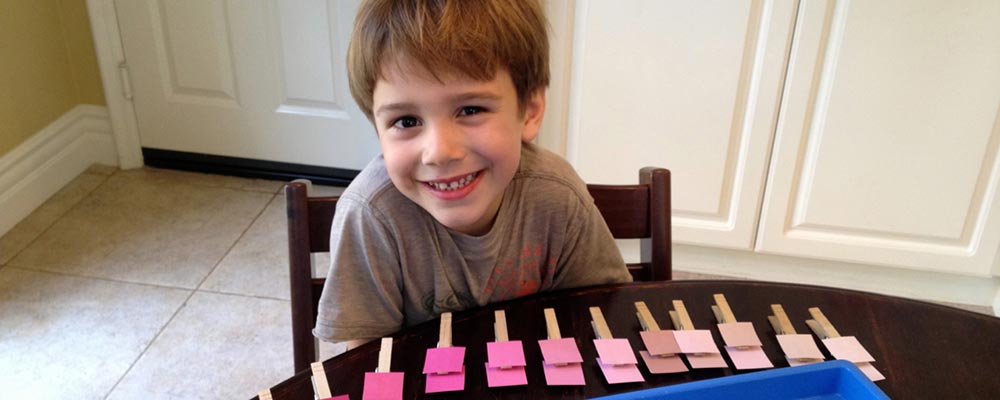Reaping the Return on Your Investment: A Parent’s Perspective on the Kindergarten Year in Montessori
Guest Post By Dana Bettwy, LePort Parent
I have two children currently enrolled at the LePort Montessori campus in Woodbridge (the Irvine – Lake campus.) Our son just completed his second year, and our daughter, her first. Montessori is expensive indeed, especially times two!
We have weighed whether we should stay with Montessori for the kindergarten year, or whether to make the jump to public school, for most of the past year. For many of us parents, economics are an important factor as we mull the question whether to keep a child in Montessori for their kindergarten year.
Beyond finances, however, there are other factors as well—some that may not appear all that dramatic on the surface. Still, I think these "less obvious" differences are critical to making an educated decision, one that is in your child’s best long-term interest. Different aspects matter more or less for different parents. For me, certain factors such as parent fund-raising, and the food they serve at school are incidental. Social development, the learning environment and overall happiness of my child are the most important considerations for me. Academics are important, but I am more interested "how" my child learns to learn at this stage in the game, as opposed to "what" they learn, per se.
Since last fall, I have been taking notes on what I think are the pros and cons for staying in Montessori for the 3rd year of the primary program, looking at each of my children’s development and growth in their Montessori experiences so far. At the same time, I’ve talked to many friends with children in public school, and I’ve done much on-line research.
The first and biggest factor for sending a child to a public school kindergarten program in Irvine is the obvious one—hard cost. Public school is free. Montessori is not. For many, the money factor may be the deal breaker. I, however, think it is equally important to look at the very real costs of taking my son out of his Montessori education at such a critical stage in the game. After all, we will have invested in two years of Montessori…what if the third year is the cashing-in year on that investment, and he would miss it by departing to public school now?
While there are many things to consider, these are the differentiators I thought most important in making our decision:
- Having invested 2 years into Montessori, the third, the equivalent of traditional kindergarten, is when all of his earlier hands on lessons come together. The lessons of the third year solidify his understanding of the concepts he has been working on for the past two years. His early introduction to addition with large numbers will be further developed with more advanced lessons into the thousands, and a gradual progression from concrete to abstract operations. This is the year he will move on to even more engaging lessons and advanced Montessori materials, from story writing to grammar, from geography to multiplication and division into the thousands. If I yank him now and put him in public kindergarten, all the counting and language skills he acquired in two years of hands on, sensorial lessons will be put on a shelf for several years and most likely lost (ugg!). This is the tender age where sensorial learning is the most critical—the critical time when he uses the materials to understand, and to scaffold his progress as he moves on to more abstract learning. The third year gives him the essential amount of time to complete this cycle of growth and learning BEFORE the program is changed. In order for him to take everything he has learned with him to become a permanent part of his understanding, this year is the most critical. Otherwise, it’s kind of like going for a Masters degree and skipping the thesis!
- Montessori has mixed age classes, which has benefited both my children tremendously. My son has waited two years to be one of the leaders of his class. He talks about the lessons the older (kindergarten) children are learning, and he cannot wait to take on that role. As a result, he is motivated to further his own learning—on his own—without being offered the gold stars, points, prizes, trophies and treats that traditional teaching uses. The kindergartners in a Montessori class are looked up to as role models for the younger ones. This teaches them leadership skills beyond what can be learned in a same age classroom, where competition and prizes are the main motivator. Research has shown this has powerful benefits for both the older, experienced and the younger, less experienced learners.
- After reading through the milestones and learning objectives of IUSD kindergarten curriculum, it is clear that the primary Montessori curriculum is much more advanced. However, content isn’t just the most important issue. The age of five to six is a very critical year of learning and development. Children still require a sensorial approach to learning allowing them to see, feel and touch the materials. They need to actually do the lessons. Research shows that children from age 3-6 learn by observing and manipulating their environment, not through textbooks and workbook exercises, which is what he would get in public kindergarten. The Montessori multi-sensory, hands-on activities are designed to directly address this critical need. Most importantly, my observation of my children’s Montessori teachers is that they are sophisticated masters at facilitating each lesson, allowing the students to work at their own pace and check their own work effectively with freedom and ease. As a former professional corporate instructor, I so appreciate that. I fear my son will not receive a fraction of the individualized attention in public kindergarten. This is invaluable. By age six the gap for learning by doing begins to close and children typically need more abstract, intellectual learning. Montessori harnesses that critical third year to close that gap, to aid them in this transition from concrete to abstraction, and to prepare them for the next cycle of development.
- After two wonderful years with his current teachers, my son’s teachers know him very well. His primary teacher understands his unique learning style, his challenges and his quirky little personality. I want him to focus on his love of learning and not have to take several months to adjust to a new system, a strange teacher and completely new teaching methodology. I don’t believe the one size fits all curriculum at public school would benefit him at this point. As far as socializing, I’m not clear why parents feel it would be "better" in a public school. My son has many good friends, not just in his class, but the entire school, where there are about 90 primary children, of which 20 will be my son’s age. Both my children have good relationships with all the other teachers on campus, who all know them both by name. They are exposed to new friends when the occasional child does get taken out and transferred to a public kindergarten, so I’m not sure what the concern about social peer group comes from. We are still deciding whether to keep our children in Montessori after kindergarten. As for my older son, by age six, he should be ready to make an adjustment to public school, if needed. Now is not the time to expose him to a big change, especially since he is an early October child, and one of the youngest amongst his age group.
In LePort’s Montessori program, my son can continue to progress at his own pace. In traditional kindergarten, he would have to wait for other children to catch up, as the Montessori program is much more advanced academically than the IUSD kindergarten curriculum. Montessori children typically learn about geometry, fractions, and all four operations of arithmetic by the end of their third year—while public school programs only expect addition and subtraction of whole numbers up to thirty. They write full stories, usually in cursive handwriting, and even begin to learn to analyze sentences and get an initial introduction to grammar. Montessori kindergarten children study cultural geography and begin to think and grow as global citizens. In his third year, my son will learn about lakes, islands, peninsulas and other geological forms, rather than having to repeat circles, squares, and rectangles, concepts he already mastered his first year. He will be exposed to fine art, rather than repeating the basic colors, which my daughter in her first year is already mastering. Many of these topics are usually not taught in public school until about third grade or later. I also like that the curriculum actually includes teaching grace and courtesy as a practice, not merely as a concept they read in a book.
- Importantly, in a Montessori classroom, learning is not focused on rote drill and memorization. My son really does understand his work and loves to learn. I’ve read too many horror stories about how the average American student really doesn’t understand why they are learning something. This gets drilled in with standardization and tests, even homework in kindergarten. (There is no homework at all in the Montessori 3rd year, which leave us precious family time after school is out!)
While these differences may appear subtle, I believe they are hugely significant. I see that allowing both our children to complete their third year in Montessori will have a long term, positive impact on them; it will shape how they learn as teenagers, and who they will grow into as adults.
In the end, for us, the “soft cost” of all of the above far outweighs the "hard cost" of what we pay to send our children to LePort Montessori. I am clear that the third year is really the completion year of our investment in the education; it is essential in reaping the return on the money we spent. Next year, we’ll go back to the drawing board, and look at the pros and cons of keeping them in Montessori for their elementary years!










